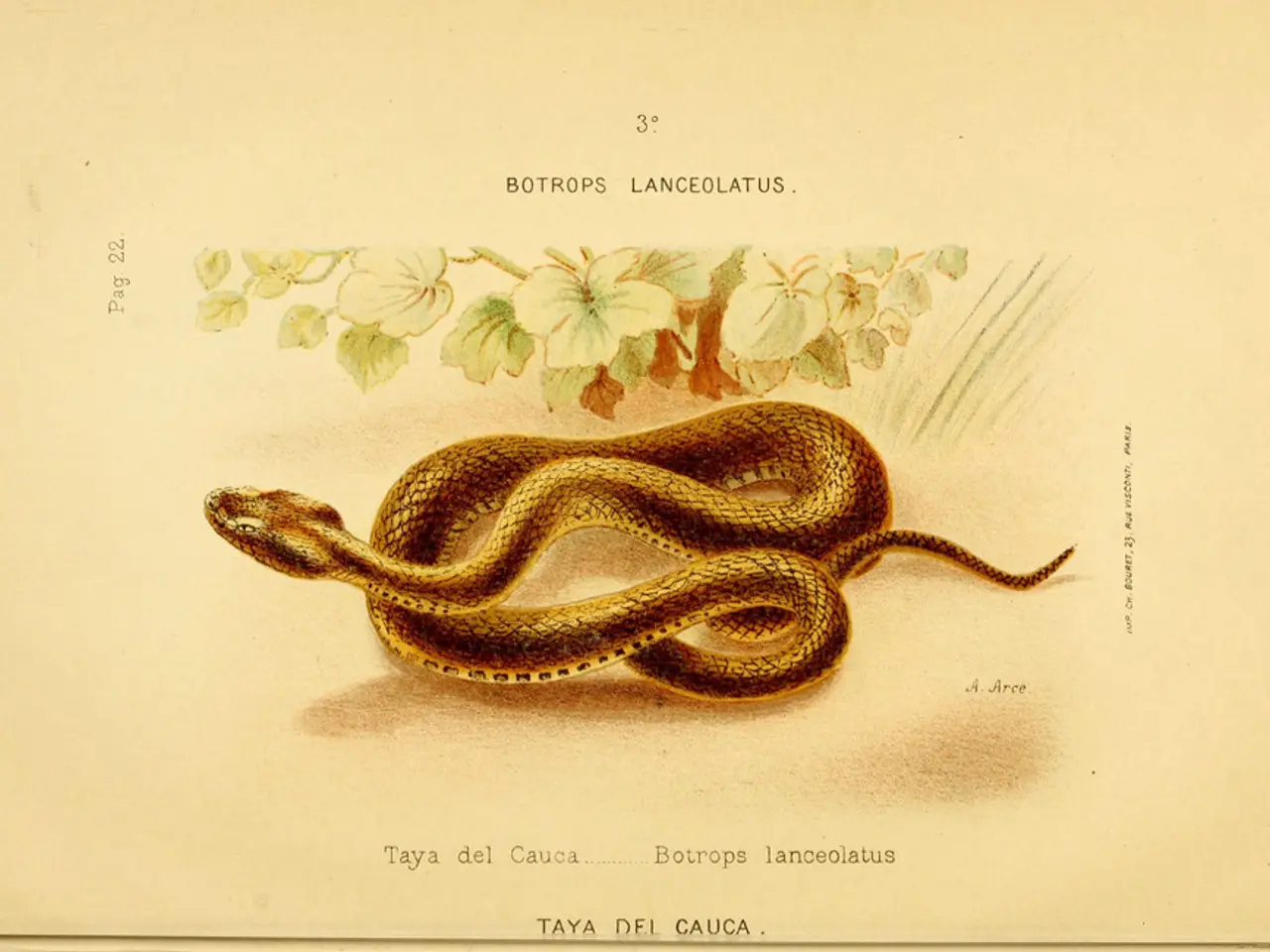The Devastating Impact of the Brown Tree Snake on Guam's Aviary Population
In the tropical Pacific island of Guam, a non-native species has taken over various habitats, causing significant disruption to the local ecosystem. The brown tree snake, a medium-sized snake native to Northern Australia, Papua New Guinea, and the Solomon Islands, has become a problematic invasive species.
These snakes, typically growing between 3 and 6 feet long, with some individuals reaching up to 10 feet, can be found in a variety of environments in their native range, including forests, mangroves, and grasslands. However, on Guam, they have adapted exceptionally well, invading human habitats such as power lines, attics, and dense forested areas.
The brown tree snake is a nocturnal hunter, most active at night. Known for their excellent climbing skills, they can wrap around tree branches with ease, and have a particular fondness for bird eggs. This preference has led to the near extinction of several bird species on the island, including many of Guam's native forest birds.
Despite their defensive nature, brown tree snakes will retreat if threatened rather than strike. However, their mild venomous bite, while not deadly to humans, can cause swelling and pain. The lack of natural predators on Guam has allowed brown tree snake populations to reproduce rapidly.
Conservationists are focusing on protecting Guam's remaining bird species by isolating and breeding them in snake-free areas. Organisations involved in combating the brown tree snake on Guam are associated with operational control programs described in scientific conferences such as the Vertebrate Pest Conference. Control measures developed include operational control techniques for managing the snake population on Guam.
The National Wildlife Research Center and other agencies are working to control the brown tree snake population on Guam by developing new ways to capture or kill the snakes. The impact of brown tree snakes on ecosystems where they've been accidentally introduced highlights the delicate balance between species and their environments.
The skin of the brown tree snake is usually a reddish-brown to yellowish-brown colour, with darker crossbands running along its body. Brown tree snakes are typically solitary, only coming together during the mating season.
The arrival of the brown tree snake on Guam serves as a stark reminder of the potential consequences of human-induced species translocation. As we continue to learn more about these elusive creatures, efforts to control their populations and protect Guam's native species are more important than ever.
Read also:
- Peptide YY (PYY): Exploring its Role in Appetite Suppression, Intestinal Health, and Cognitive Links
- Toddler Health: Rotavirus Signs, Origins, and Potential Complications
- Digestive issues and heart discomfort: Root causes and associated health conditions
- House Infernos: Deadly Hazards Surpassing the Flames








